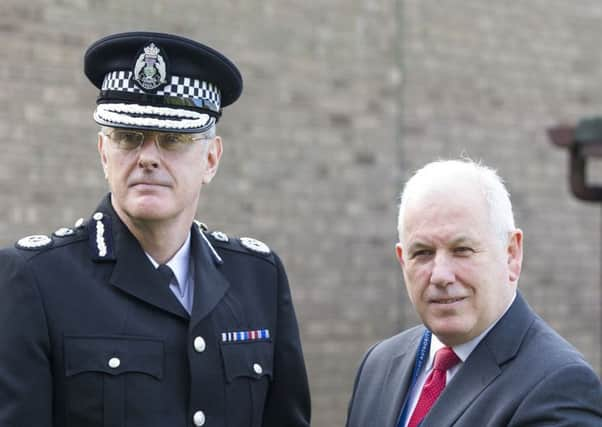Leader comment: Police numbers should not be a political football


The keeping of that pledge while trying very hard to cut costs resulted in highly paid police officers being put in to back-room roles or management roles where civilians could have worked, so the extra 1,000 officers were not on the beat and perhaps not being very effective in the fight against crime.
The SNP ditched the pledge last year.
The SNP Scottish Government has also made the biggest change to Scotland’s policing for many years with the amalgamation of the eight regional forces in to one national one. It was hoped this would deliver significant cost savings by ending duplication.
Advertisement
Hide AdAdvertisement
Hide AdBut Police Scotland has not had its problems to seek and the first Chief Constable appointed, Stephen House, bowed to the pressure his handling of the force had created and announced he was standing down in August 2015. He was replaced by Phil Gormley just over a year ago, but the problems have not gone away.
Last month it was called “an organisation in crisis” after Auditor General Caroline Gardner said the force will face a £200 million funding gap by 2020-21. There has also been criticism of the Scottish Police Authority, the body set up to oversee the police.
So with that background it is not hard to see why the Scottish Government has moved on its 1,000 officers pledge, and it is right that it does so. There is a logic to taking police officers out of back-room roles and management roles and putting them back on front line policing, and then having the back-room roles taken on by civilians who would do specific tasks and not need such comprehensive training.
And it is also true that the nature of crime is changing and it makes sense to structure the force to meet those changing patterns, and a lot of that crime will be happening in cyberspace so having experts, who do not have to be police officers, seeking out crime and evidence of crimes makes sense.
So the cutting of officer numbers by 400 as part of a ten-year policing plan, through a slowing in recruitment between 2018-20, should not be overly concerning.
However, although justice secretary Michael Matheson announced the Scottish Government had provided an enhanced £61m reform budget for 2017-18 to support the changes, that does not seem much given the anticipated shortfall by 2020-21.
The hope that staff costs can come down as much as they must through the hiring of civilians, cutting some officer numbers and greater use of technologies like Skype to make better use of officers’ time would seem very optimistic.